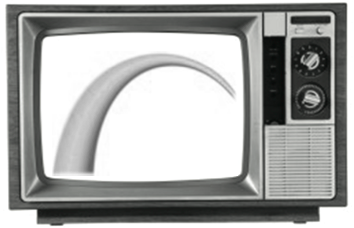…The history of queers on the small-screen
 Situational comedies have long been an important reflection of pop culture, and representations of minority groups in these shows can often serve as a mirror image of how we view these groups in real life.
Situational comedies have long been an important reflection of pop culture, and representations of minority groups in these shows can often serve as a mirror image of how we view these groups in real life.
In the mid-1970s the first openly-gay, recurring characters began to emerge in the television scene. Perhaps the most memorable portrayal was John Ritter in Three’s Company, who lies about being homosexual in order to live in the same apartment as his two female friends. Ritter’s character acts in a very stereotypical way, often coming off as very flamboyant and effeminate.
Throughout the 1980s the prevalence of gay characters increased significantly. Often, the societal stigma surrounding homosexuality was reflected in these shows, as the characters were shown as being ashamed of their sexuality, or their sexuality was not revealed at all. In a 1981 sitcom, Love, Sidney, the main character’s sexual orientation was not revealed until the show neared cancellation. Those characters that were openly gay often knew someone with AIDS or were struggling with it themselves.
In the 1990s we began to see a shift towards more normalized portrayals. However, shows that featured openly gay, normalized characters often faced consequences. In 1997, Ellen DeGeneres came out as the character in her sitcom, Ellen, and in real life. The show had long-featured gay characters (two of Ellen’s best friends in the show were gay), however, Ellen’s reveal unleashed a media frenzy and incurred strong backlash from conservative groups, prompting the show to be pulled in May 1998. Several other sitcoms during this time successfully featured homosexual couples, such as Roseanne and Friends.
By far the most influential and successful sitcom featuring openly gay main characters was Will & Grace. The show, which aired for an incredible eight seasons, centered around the lives of best friends Grace Adler and Will Truman. Truman, played by straight actor Eric McCormack, defied the notion that a gay character must be effeminate or flamboyant, while his eccentric friend, Jack McFarland, exemplifies the stereotypical portrayal of homosexuals. This dichotomy helped to show that homosexuals can be just as different from one another as heterosexuals.
Cross-stereotyped characters appear quite often in today’s sitcoms. In ABC’s Happy Endings, one of the principal characters is gay, yet he is portrayed as the stereotypical “macho male,” spending his time fixing cars and playing video games. These gay characters are featured across the major networks. NBC’s The New Normal centers on a gay couple trying to have a baby, while CBS’s Partners follows the “bromance” between two best friends, one gay and one straight.
Today, it is hard to recall a sitcom which has not featured at least one gay character.
“10 or 15 years ago, the issue was still very controversial, but now it is routine,” Professor of Communication Studies Phil Voight said. “We’ve finally reached a stage of honest portrayal where we see the person not as representative of that category [homosexuality].”
Portrayal of gay characters in sitcoms has changed dramatically over the years, from being virtually non-existent, to only showing stereotypes, to presenting characters as individuals rather than solely as representations of their sexuality.
While this trend clearly represents a cultural shift toward acceptance of homosexuals, today we are still dealing with differing attitudes toward the LGBT community, an issue exemplified in the controversy surrounding Minnesota’s proposed marriage amendment. Only time will tell if the growing rejection of this stigma will continue to move beyond the TV screen.
Sparta, Christine. “Emergence from the closet.” USA Today. 11 Mar. 2002.
